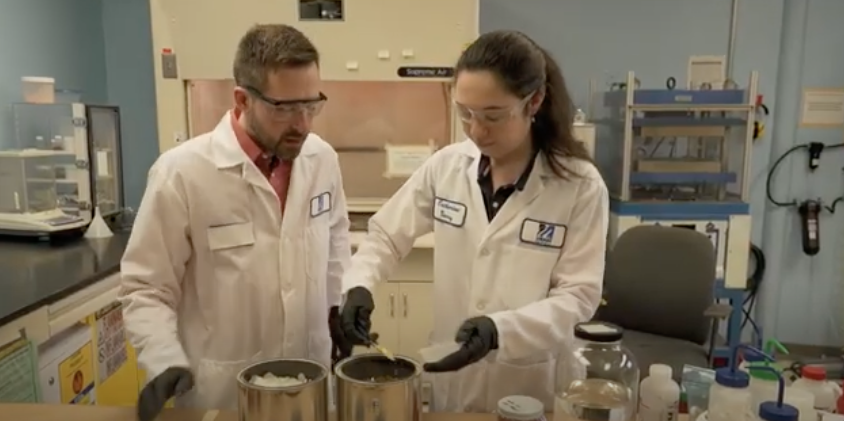

Per- and poly-fluoroalkyl substances (PFAS)
Per- and poly-fluoroalkyl substances (PFAS) represent a category of thousands of chemicals that are widely used in manufacturing and consumer products. PFAS are used in a wide range of products across almost every industrial sector to add water, stain, and oil repellency, chemical and temperature resistance, friction reduction, and surfactant properties. This class of chemicals is often described as “forever chemicals” because they never fully break down in the environment. PFAS have been detected in drinking water, and are linked to numerous adverse heath impacts, including cancer and interference with endocrine and metabolic systems.
Featured Stories

Transene Company Eliminates its Use of PFAS and Saves Money (PDF)
Transene Company, a manufacturer of advanced materials for the electronics industry, wanted to find viable alternatives to perfluoroalkyl substances (PFAS) use in semiconductor manufacturing in response to customer demands for PFAS-free products.

PFAS in Artificial Turf Carpet
The Massachusetts Toxics Use Reduction Institute (TURI) has received inquiries from municipalities and community members regarding the presence of per- and poly-fluoroalkyl substances (PFAS) in artificial turf carpet. This brief fact sheet provides some basic background information on PFAS and on recent testing for these chemicals in artificial turf as reported by nonprofit organizations. This information is provided under TURI’s mandate to provide information on toxic chemicals and safer alternatives to businesses, municipalities, community members and others.
Related Activities and Resources
Collaboration with industry
TURI has a long history of helping a variety of businesses reduce their use of toxic substances. Our work on safer alternatives to PFAS have included the following industries, sectors and applications:
- Electronics
- Textiles
- Automotive
- Refrigeration
- Clean energy
- Food contact materials
If you are interested in learning more, please visit our Resource Hub or contact us.
Community support
TURI has provided technical and financial support for communities to better understand where PFAS is being used and what could be done to reduce the risks to children, workers and other sub-populations at elevated risk. These projects include:
- Reducing PFAS in Firefighter Turnout Gear
- Identifying PFAS in children’s products
- Identifying PFAS in personal care products
- Evaluating alternatives to F-gas refrigerants
TURA resources
- PFAS Policy Analysis
- PFAS Reporting Guidance February 2025
- Identifying PFAS Use & Understanding Reporting Requirements (OTA)
- Reported PFAS uses under TURA and safer (non-PFAS) alternatives
- PFAS information reviewed by the Science Advisory Board
- Reporting Certain PFAS NOL under TURA: What you need to know
- Additional Resources
Reporting PFAS use in Massachusetts (Webinar)
This webinar discusses the requirement for facilities to report their use of numerous PFAS substances under the Massachusetts Toxics Use Reduction Act (TURA). It offers guidance to toxics use reduction planners on how to determine if your facilities are using products containing PFAS and how to estimate those uses. Guidance from MassDEP is also offered.
Watch

